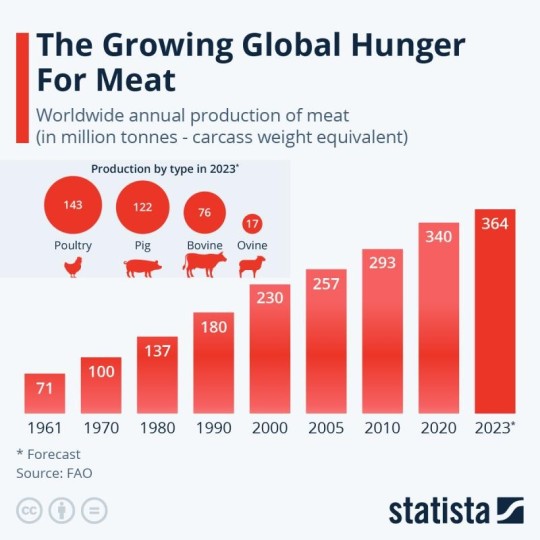#Global Appearance Boards Market Global Global Appearance Boards Market Global Appearance Boards Market Growth Global Appearance Boards M
Text
BCCI’s Lollipop to the IOC - Turning Cricket into a Global Sport

Cricket, a sport with a staggering fan base of 2.5 billion people worldwide (According to Sport Pledge) is making significant strides towards Olympic inclusion. The International Cricket Council (ICC) has been actively pushing for cricket's inclusion in the Olympic Games, with the ambition to debut at the LA28 Games. The Board of Control for Cricket in India (BCCI), led by Jay Shah, has played a pivotal role in this endeavor. The Sportwiz explores the journey of cricket towards becoming a global sport, driven by the aspirations of the ICC and the strategic efforts of the BCCI.

source - IOC
Cricket has been making notable appearances in various multi-sport events, such as the Birmingham Commonwealth Games in 2022 and the Asian Games in 2010, 2014, and the upcoming 2023 edition in Hangzhou, Even this years African Games hosted in Ghana will consist of cricket where it will be played in the T20 format. These inclusions highlight the growing recognition and acceptance of cricket as a global sport.

source - ICC
The question arises: Does the Olympics need cricket, or does cricket need the Olympics? Cricket's immense popularity, with a fan base of 2.5 billion people and its status as the second most-watched sport globally, demonstrates the sport's strength and appeal. However, Olympic inclusion would provide an unparalleled platform for cricket to reach new audiences and further boost its global recognition.

source - business today
The ICC's bid for Olympic inclusion emphasized the massive viewership cricket attracts. The 2022 T20 World Cup garnered a staggering 1.2 billion unique viewers globally. Additionally, the 2020 Women's World Cup saw 89 million viewers tuning in, showcasing the increasing popularity of women's cricket. These statistics exemplify cricket's potential as a major draw for broadcasters, sponsors, and fans alike.
India's significance as a cricket powerhouse cannot be overlooked. The country accounts for a substantial portion of cricket's global viewership, with 76% of the 113.5 million viewing hours recorded during major tournaments coming from India. The BCCI, backed by India's massive cricket market, has offered the International Olympic Committee (IOC) a chance to tap into this unique viewership, potentially elevating the Olympic Games' viewership in the Indian subcontinent.

source - InsideSport.in
The BCCI's main revenue stream, broadcasting rights, presents a compelling proposition for the IOC. Currently held by JIO and Viacom 18 for $31 million, these rights contribute to the ongoing profits of the Olympics. If cricket is included in the Olympics, the ICC estimates potential revenue of $130-260 million. These figures highlight the financial gains that could be achieved through cricket's Olympic participation.
The number $31 million USD is larger than the previous years in terms of Olympics in India but if we compare it to a similar number showcasing the money that’s involved in cricket, in the next financial cycle of the BCCI the Pakistan Cricket board ( PCB ) who hold a share of 5.75% is approximately valued at $34.5 million USD.

PCB Chairperson Mr Najam Sethi
source - The Express Tribune
Cricket's economic value has witnessed a remarkable surge, as evidenced by the 300% increase in media rights value for ICC and IPL. The media rights for ICC and IPL soared from ₹16,347 crores to a staggering ₹48,390 crores. This exponential growth further solidifies cricket's position as a lucrative sporting asset.

source - Sportskeeda
With the Indian Premier League (IPL) now ranked as the second most valued sporting league globally, cricket's future looks promising. The IPL's substantial viewership of 380 million domestic TV viewers in the 2021 season and cumulative viewership of 383 billion minutes for the 2020 campaign across TV and digital platforms indicate cricket's enormous potential according to Jay Shah. As cricket continues to captivate audiences, its inclusion in the Olympics could propel the sport to new heights.


The bid to include cricket in the Olympics is anticipated to be decided in the final session of the IOC, scheduled to take place in Mumbai in October. Brisbane 2032 Olympics presents a realistic opportunity for cricket's inclusion, given Australia's cricketing heritage. Surprisingly, Los Angeles may also be a potential host, thanks to the approval of the bid by former Mayor Eric Garcetti, now the US Ambassador to India, fostering stronger relations between India and the USA.

BCCI Secretary Jay Shah ( left ) with US Ambassador to India Eric Garcetti ( right )
Source - @USAmbIndia/Twitter
Cricket's journey towards becoming a global sport is gaining momentum, with the ICC and BCCI leading the way. The sport's immense viewership, economic value, and potential for growth make it an attractive addition to the Olympic Games. As the IOC contemplates cricket's inclusion, the world awaits a decision that could redefine the sport and pave the way for a future where cricket becomes truly global.
By Navneet Oberoi
Sources -
ICC
The Economic Times
Espncricinfo
Sports Pro Media
The Guardian
Crictracker
Sawera Pasha
#cricket#bcci news#bcci#jay shah#olympics#sports journalism#sports#economics#los angeles#brisbane#mumbai#india#Spotify
2 notes
·
View notes
Text





On Wednesday, Walt Disney Co.'s chief executive, Bob Chapek, unveiled the company's first brand-new cruise ship in ten years, the fruit of the initiative he championed before the board of directors of the business.
In spite of recent incidents that raised concerns about his tenure, Chapek was able to get a three-year contract extension on Tuesday with the introduction of the 4,000-passenger Disney Wish. Chapek took over as Disney's CEO in February 2020.
At a christening ceremony that featured pyrotechnics and appearances by Mickey and Minnie Mouse, Ant-Man, Chewbacca, and other characters from Disney's extensive library, Chapek informed guests that it took more than six years to get the 144,000-ton Wish to the market.
On the ship, "we combine these amazing characters and stories with incredible technology to create brand new experiences," Chapek said.
The vast theme parks, experiences, and products division of Disney, which has recovered from pandemic closures, includes the cruise industry. In the first half of fiscal 2022, operating income increased to $4.2 billion, turning around a loss of $535 million from the prior year.
Disney does not reveal the percentage of earnings that come from cruises, but according to Chapek in November, given the premium price that Disney charges, the industry has achieved "a double-digit return on investment."
According to Josh D'Amaro, chairman of Disney's parks division, The Wish, the fifth ship in the company's fleet, "kicks off the largest growth in Disney Cruise Line history." By 2025, two more ships will be delivered.
The industry is attempting to win back clients following a 15-month hiatus caused by the COVID-19 outbreak as the new ship sets sail.
According to the Cruise Lines International Association, the number of passengers may not reach levels seen in 2019—29.7 million people boarded ships globally—until the end of 2023.
Even passengers who have received vaccinations are still at risk of contracting COVID-19, according to the U.S. Centers for Disease Control and Prevention, which notes that the illness "spreads easily between persons in close quarters on board ships."
D'Amaro predicted that Disney's cruise line would resume operating at full capacity, citing consistent increases in bookings.
"When all is said and done, we'll have seven of them, and all seven of them will be filled out," he said in an interview. "I have 100% confidence in that."
The ship also "complements everything that we do," D'Amaro added. "For example, people that will come to get aboard this ship ... they're spending three days at Walt Disney World."
AquaMouse, which the business bills as its first attraction at sea, will be used to try to lure tourists to the Disney Wish. The animated short films featuring Mickey and other characters are incorporated into the theme park-like attraction as passengers float through 760 feet (230 metres) of winding tubes hung above the upper decks.
Families can immerse themselves in the worlds of Marvel's Avengers and Disney's "Frozen" through dining experiences. For adults, Disney designed a hyperspace lounge with a Star Wars décor that resembles the star cruisers from "Solo: A Star Wars Story."
Additionally, the ship offers an immersive interactive experience that fuses the real and virtual worlds. A Disney Cruise Line app transforms a user's phone into a digital "spyglass" for seeing the night sky and exploring adventures with constellations that resemble Disney and Pixar characters.
The interactive game is a step in the direction of Chapek's objective of becoming visible in the metaverse. In order to keep consumers interested in Disney characters and tales between the release of new films and park visits, the CEO has pushed for virtual experiences.
On July 14, the Disney Wish will depart Florida's Port Canaveral for its inaugural trip.
After the business opposed legislation to restrict LGBTQ discussion in schools, Disney has become mired in controversy in the state. The removal of the corporation's self-governing status for Walt Disney World in Orlando was triggered by this; nevertheless, the act has not yet taken effect.
Disney employees had encouraged the corporation to speak out against the legislation that was branded as the "Don't Say Gay" bill by opponents of the LGBTQ community.
#walt disney#the wish#cruise#disney parks#Disney#cruiseline#trending#follow#like#share#news#instanews#instagood#instagram#love#travel#luxurylifestyle#luxurytravel#luxury#viral#explore#explorepage
5 notes
·
View notes
Text
The Rise of Crypto Exchanges: A Comprehensive Overview
With the emergence of cryptocurrency exchanges, the world of digital finance has completely changed and users now have unmatched access to a wide range of digital assets and trading possibilities. This in-depth analysis delves into the emergence of crypto exchanges, examining their development, significance, and potential in the ever-evolving fields of decentralized finance and blockchain technology.

The Emergence of Crypto Exchanges:
Peer-to-peer transfers and unofficial discussions on message boards and forums typified the early stages of bitcoin trading. But as interest in cryptocurrencies grew, it became clear that reliable and effective trading systems were required. As a result, the first centralized cryptocurrency exchanges appeared, including Coinbase and Mt. Gox, offering customers a centralized venue for the purchase, sale, and exchange of digital assets.
Centralized vs. Decentralized Exchanges:
Because they provided users with a trading experience akin to that of traditional financial markets, centralized exchanges swiftly rose to prominence in the cryptocurrency industry. However, the emergence of decentralized exchanges was prompted by worries about privacy, security, and censorship resistance. DEXs give users more control and autonomy over their assets by enabling direct trading between users without the need for middlemen on blockchain networks.
The Growth of Crypto Trading:
Millions of people and billions of dollars in trade volume have been drawn to cryptocurrency trading as a result of the expansion of cryptocurrency exchanges. Thousands of exchanges now serve a worldwide clientele and provide a vast selection of trading pairs, liquidity pools, and sophisticated trading tools. The emergence of margin trading, futures contracts, and derivatives markets has expanded the range of trading alternatives accessible to consumers, hence generating novel prospects for both profit and risk mitigation.
Regulatory Challenges and Compliance:
The increasing importance of cryptocurrency exchanges has led to heightened scrutiny from global regulators and lawmakers. Exchanges must implement strong risk management and compliance procedures due to regulatory obstacles including Know Your Customer and Anti-Money Laundering rules, which place a major compliance burden on them. Jurisdictions differ greatly in how they regulate cryptocurrency exchanges; some encourage innovation while others have stringent laws.
Innovations in Crypto Exchange Technology:
Innovation is a driving force in the evolution of crypto exchanges, with exchanges constantly seeking to improve security, scalability, and user experience. Advancements in blockchain technology, such as cross-chain interoperability and layer 2 scaling solutions, are reshaping the infrastructure of crypto exchanges, enabling faster and more efficient trading. Additionally, the integration of decentralized finance protocols into exchanges is blurring the lines between centralized and decentralized platforms, offering users the best of both worlds.
Future Outlook:
Crypto exchanges have a bright future ahead of them, with more innovation, growth, and adoption to come. Crypto exchanges stand to gain significance in the global financial system as blockchain technology advances and regulatory uncertainty decreases. Crypto exchanges are poised to become the backbone of the digital economy as a result of the emergence of decentralized finance (DeFi) and the expanding acceptance of cryptocurrencies by the general public.
Conclusion:
The emergence of cryptocurrency exchanges has revolutionized the purchasing, selling, and trading of digital assets, enabling more people worldwide to access financial markets and feel more empowered. Crypto exchanges will continue to be at the vanguard of digital banking as long as the industry innovates and adapts, which will propel blockchain technology's uptake and spread in the years to come.
0 notes
Text
Global Wood Wax Market worth 2.7% CAGR by 2028 - A Press Release By IHR Insights
Wood wax is a natural or synthetic material utilized as a preservative to wood surfaces, generally when they are being finished. The intention of adding the waxes can be to improve gloss and color, offer protection from moisture damage (especially in outdoor furniture), or make a waterproof seal between coats of paint.
Wood wax offers a protective layer that shields wood surfaces from moisture, scratches, and other damage. With a focus on preserving the appearance and longevity of wooden items, wood wax is sought after for its ability to maintain the natural beauty of wood which majorly augments the product demand. Moreover, the popularity of DIY woodworking and crafting projects has also boosted the market growth. As more individuals engage in these activities, the demand for wood wax as a user-friendly and accessible finishing option has also grown.
The increasing demand for eco-friendly and sustainable products presents an opportunity for manufacturers to develop and promote wood waxes made from natural and environmentally friendly ingredients. Offering products with low VOCs and biodegradable components can attract environmentally-conscious consumers and industries. In addition, the manufacturers can explore opportunities for product diversification and customization in the wood wax market. Developing specialized formulations for different wood type, finishes and applications can cater to the specific needs of various industries and consumers.
The Wood Wax Market research report titled as “Wood Wax Market: By Type & By Application - Global Trends & Forecast to 2028”
Leading players operating in the market are Briwax International Ltd, Fiddes & Sons Limited, Liberon Limited, Stewart Superior Europe Ltd., and Rust-Oleum Corporation.
In the wood wax market, the Asia Pacific region currently dominates the wood wax market due to higher manufacturing bases and increased usage of paraffin wood wax in panel boards, with maximum contribution coming from China.
The report consists of ---- Tables 74 and charts 44 depicting the in-depth market study and the impact analysis of COVID-19 by Vendor name. View detailed TOC here.
Wood Wax Market by Types:
Paraffin wood wax
Bees wood wax
Carnauba wood wax
Wood Wax Market by Applications:
Medium Density Fiberboard
Particleboard
Wood Coating
Others (Oriented Strand Board, Lubrication, etc.,)
Wood Wax Market by Geography:
Asia Pacific
Europe
North America
Rest of the World
About IHR Insights:
We are Market Research and Consulting firm, Offers Market Intelligence, Custom Market Research, Consulting, Go-To-Market and Content Development Services. Consulting Services Includes Market Entry Strategy, Opportunity Assessment, Competition Tracking, Technology Mapping, Sentiment Analysis, Brand Reputation Management. We work on full time engagement model with clients supporting their market intelligence needs across various departments at global level. We work as a partner and provide continues support to the organizations from basic secondary research to strategic inputs in business planning and expansion.
For further inquiries or media contact:
Marketing & Communications
IHR Insights
[email protected]
0 notes
Text
Some Trends to Watch in Mutual Funds
Mutual funds in India have become more and more popular among investors. People are turning to them to diversify their investments and take advantage of the expertise offered by professional fund managers. Since starting in 1963, the mutual fund industry in India has seen significant changes. Various reforms and rules have been introduced to ensure that investors are protected.
In this blog, we'll take a closer look at the trends and insights that play a crucial role in shaping the future of mutual funds in India
What are Mutual Funds?
A mutual fund is a financial vehicle managed by a professional Fund Manager, serving as a trust that consolidates capital from diverse investors who share common investment objectives. This pooled capital is then strategically invested in a varied portfolio comprising equities, bonds, money market instruments, and other securities. The returns generated from these investments are distributed proportionately among the investors after deducting applicable expenses and levies, determined by the scheme's "Net Asset Value" or NAV.
Top 5 Trends in Mutual Funds
Now that we've covered what mutual funds are, let's explore the top trends influencing the industry:
Embracing Digital Transformation
India's mutual fund landscape is evolving with technology integration, enhancing user experiences, and simplifying investment processes. Mobile apps and online platforms empower investors with seamless transactions and real-time monitoring. Robo-advisory services are gaining popularity, offering personalized investment advice based on individual risk preferences and financial goals.
Rise of Passive Investing
While actively managed funds remain popular, there's a noticeable shift towards passive investing. These funds, which track specific indices, aim to replicate performance at lower costs than actively managed counterparts. The increasing popularity of low-cost investment options is evident in India's growing assets under management (AUM) of passive funds.
Sustainable Investing on the Rise
Environmental, Social, and Governance (ESG) investing is gaining traction in India, reflecting a global trend. Investors are now prioritizing companies that align with their values and positively impact society and the environment. As Indian companies adopt sustainable practices and disclosure norms improve, we can anticipate the growth of ESG-themed mutual funds, providing investors with socially responsible investment choices.
Navigating Regulatory Changes
The Securities and Exchange Board of India (SEBI) is actively implementing regulatory changes to safeguard investor interests and boost transparency. Recent regulations focus on categorizing and rationalizing mutual fund schemes and introducing the Total Expense Ratio. SEBI's commitment to investor education is expected to bolster confidence, fostering greater participation in the mutual fund industry.
Diversification Beyond Traditional Assets
Traditionally concentrated on equity and debt funds, the Indian mutual fund industry is diversifying its offerings to include alternative asset classes like real estate, commodities, and infrastructure. This expansion caters to the growing investor interest in diversifying portfolios and gaining exposure to alternative assets, providing a broader range of investment opportunities.
Conclusion
In conclusion, there appears to be a bright future for mutual funds in India due to rising penetration, technological use, asset class development, and regulatory improvements. As the industry evolves, we can expect further developments, including emerging new players, customization of investment solutions, and increasing participation from smaller cities.
To navigate this evolving landscape effortlessly, investors can leverage user-friendly tools like the mutual fund app, making the world of mutual funds more accessible and convenient.
0 notes
Text
Pricing in the Meat Industry

Written By: Gargi Sarma
Meat is more than simply food; it's a sophisticated commodity with a complex web of factors impacting its price. It's a mainstay in many diets around the world. Customers' final price is shaped by a wide range of factors from the farm gate to the shop shelf. To fully comprehend meat pricing, we must examine this complex system and navigate the interactions between supply and demand, market structures, laws, and even psychological strategies.

Figure 1: The Growing Global Hunger for Meat (Source: Statista)
For many years, there has been an increasing global need for beef. The Food and Agriculture Organization of the United Nations (FAO) reports that during the 1960s, the world's meat production expanded fivefold. The FAO estimates that 364 million tons of meat will be produced in 2023.
The Intertwined Dance of Supply and Demand:
The basic economic concept of supply and demand is at the core of the price of meat. Animal availability and pricing can be greatly impacted by a number of supply-side factors, including weather fluctuations, disease outbreaks, feed costs, and livestock breeding cycles. Farmers may be forced to grow livestock to market weight earlier if feed prices suddenly rise, for example. This could result in a glut of smaller animals and possibly lower prices. On the other hand, severe winters may restrict the amount of feed available, reducing growth, and resulting in a drop in supply and subsequently higher prices.
Demand is also very important. The intake of meat can be influenced by cultural customs, consumer preferences, income levels, and even health issues. Increased demand for premium cuts, for instance, might result from rising disposable incomes, while customers may choose leaner choices due to greater health consciousness, which would have an impact on costs across the board.
Market Structures: From Farm to Fork:
Meat travels through a complex network of interconnected parties from farm to fork, all of whom have a stake in the outcome.
Farmers: The initial expenses of growing livestock, such as feed, land, and veterinary care, are borne by farmers because they are the primary producers. The industry's power dynamics and erratic market conditions frequently put pressure on its profit margins.
Packers and processors: These massive companies handle the killing, butchering, and packaging of meat; they also add to processing expenses and have an impact on the cuts and portions that are offered to customers. Over time, their consolidation has led to worries about possible price manipulation and diminished bargaining leverage for farmers.
Distributors and retailers: The final price at the checkout counter is further increased by the markups, marketing expenditures, and transportation charges that wholesalers and supermarkets add. The ultimate consumer pricing is also influenced by the degree of competition among retailers and their ability to negotiate with processors.
Control and Outside Factors:
In addition to market dynamics, the pricing of meat is significantly influenced by government restrictions and external influences. Trade agreements, import quotas, and food safety regulations can affect the supply and demand inside the country, causing changes in prices. Disease outbreaks, such as avian influenza, for example, might lead to import restrictions, which lowers competition and may drive up domestic prices. Similar to this, environmental laws about pollution prevention or animal welfare may increase producer costs, which will ultimately be reflected in the end product price.
Psychological Pricing: Gently prodding customers in the meat section
Even the price tag, which may appear simple, is skillfully designed to affect how customers behave. Charm pricing, which ends prices in nines, such as $4.99, is one technique that lowers costs and creates a sense of value. Anchor pricing emphasizes savings and portrays the final price more enticingly by presenting a higher initial price followed by a discount. When costly cuts are placed strategically next to less expensive options, customers may be persuaded to choose the more expensive options by use of comparison.
Challenges:
The meat industry faces a complex web of challenges when it comes to pricing its products. Balancing profitability with consumer affordability while navigating a volatile market requires careful consideration of several factors:
Demand Fluctuations:
Seasonality: Consumer demand for meat varies significantly throughout the year, impacting prices. Holidays and barbeque season drive up demand, while quieter periods see prices dip. Predicting these ebbs and flows accurately is crucial for setting optimal prices.
Economic Trends: Fluctuations in the economy can significantly impact consumer spending habits. During recessions, consumers might opt for cheaper cuts or alternatives, forcing price adjustments.
Dietary Trends: Growing awareness of health and environmental concerns has led to a rise in vegetarianism and flexitarianism. This shift in consumer preferences necessitates diversification of offerings and potentially lower prices for traditional meat products.
Reliable Transportation:
Perishable nature: Meat is highly perishable, requiring consistent cold chain logistics for safe transportation. Maintaining this infrastructure adds to operational costs, which may be reflected in pricing.
Fuel and labor costs: Rising fuel prices and labor shortages in the transportation sector can significantly impact delivery costs, putting pressure on meat processors to adjust prices accordingly.
Global disruptions: Pandemics, geopolitical conflicts, and natural disasters can disrupt global supply chains, leading to transportation delays and increased costs that may require price adjustments.
Wastage:
Processing losses: During processing, trimming, and packaging, unavoidable meat loss occurs. Minimizing this wastage through efficient practices and technology helps control costs and allows for fair pricing.
Spoilage: Improper handling or storage can lead to spoilage, resulting in lost revenue and potentially impacting future pricing strategies to compensate for these losses.
Consumer waste: Consumers may discard parts of meat due to improper storage or preparation, leading to overall industry waste and potential pressure on producers to lower prices to compensate.
Production:
Feed costs: The cost of animal feed fluctuates based on grain prices and other factors, directly impacting production costs and requiring adjustments in pricing strategies.
Animal health and welfare: Ensuring animal health and welfare often involves additional costs for veterinary care, improved living conditions, and antibiotic-free practices. These efforts might be reflected in higher prices for premium meat products.
Labor shortages: The meat industry faces labor shortages, leading to increased labor costs and potentially requiring price adjustments to maintain profitability.
Additional Challenges:
Competition: Intense competition within the meat industry puts pressure on pricing, forcing producers to find ways to differentiate their products and justify higher prices.
Government regulations: Environmental and animal welfare regulations can add to production costs, which may be reflected in pricing strategies.
Consumer price sensitivity: Consumers are increasingly price-sensitive, demanding value for their money. Finding the right balance between affordability and profitability is crucial for success.
Data & Analytics: Taking the wheel of pricing:
Meat producers and retailers are depending more and more on advanced analytics to guide their pricing strategies in the data-driven world of today. To forecast demand and improve pricing models, they monitor rival pricing, consumer preferences, industry trends, and even meteorological patterns. Through the examination of past data and current sales figures, they can dynamically modify prices, providing specific discounts or modifying markups in response to shifts in demand.
Produce Freshness Detector: Integration with POS Data - Retailers in the meat business can precisely monitor the sales performance of fresh produce by connecting the data from the Produce Freshness Detector with point-of-sale (POS) information. By optimizing revenue and decreasing waste, this integration enables dynamic pricing adjustments based on real-time freshness indicators.Teys Australia: This major Australian meat processor uses the "Shelf Life Predictor" system, which combines sensors, machine learning, and cloud-based analytics to assess meat freshness and predict shelf life. Integrating this data with POS allows for informed dynamic pricing based on real-time product quality.
In-Store Display: Integration with Demographic Detection Camera - Retailers can customize promotional content based on the demographics of the customers present by merging data from demographic detection cameras with information from in-store displays. For example, personalized advertising might be displayed based on the preferences of a certain demographic, such as meat varieties, to maximize sales and decrease waste.InContext Solutions: Integrates in-store displays with shopper behavior data, which could include pre-existing demo data.
Expiration Date Tracker: Integration with Inventory Data - Inventory management systems that integrate data from expiration date trackers guarantee proactive handling of merchandise that is about to expire. This integration reduces waste by enabling prompt restocking, markdowns, or targeted promotions to move out merchandise before it goes bad.Fishbowl: This popular cloud-based inventory management system (IMS) offers built-in expiration date tracking, batch and lot control, and real-time stock visibility to minimize waste and optimize product movement.
Demographic Detection Camera: Integration with POS Data and Electronic Shelf Labels - Retailers may learn more about how different populations purchase by combining POS data, electronic shelf labeling, and demographic detection camera data. Strategic price decisions, such as providing discounts or promotions during peak hours for particular consumer groups, are made possible by this knowledge, which maximizes revenue.Criteo: Specializes in retargeting and dynamic product ads, potentially benefiting from real-time purchase data from POS systems.
Electronic Shelf Labels: Integration with GS1 Barcode Data and Inventory Data - Accurate product information and inventory levels can be obtained by integrating GS1 barcode data with electronic shelf labels. By ensuring that the price on the shelf corresponds with the real product data, this integration lowers pricing errors. Real-time information on inventory levels also reduces waste by preventing stockouts and overstocking.RapidPricer: RapidPricer integrates electronic shelf labels with barcode data and inventory management systems which ensures accurate pricing and helps manage stock levels to avoid overstocking and waste.
GS1 Barcode Data: Integration with POS Data and Weather Data - When paired with real-time weather information and point-of-sale data, GS1 barcode data enables shops to modify prices in response to outside variables. For example, shops can use targeted promotions or discounts on particular meat products to increase demand and minimize wastage during bad weather.GS1 Barcode: When a product with a GS1 barcode is scanned at checkout, POS systems can immediately identify the product and link its sales data to real-time weather information. This allows retailers to implement dynamic pricing strategies or targeted promotions based on weather patterns.
Integration with Weather Data: Reduction of CO2 Emission - Effective supply chain management is made possible by the integration of weather data with inventory and transportation systems. Businesses can minimize CO2 emissions and fuel usage by optimizing transportation routes based on weather conditions. Furthermore, precise weather forecasts support demand forecasting by avoiding overstocking and the waste that follows.Microsoft Azure Maps: Offers various geospatial services, including weather forecasting APIs, that can be integrated into supply chain management and logistics software.
Benefits:
Strategic Pricing Decisions: Retailers may optimize income by making well-informed pricing decisions based on customer behavior, product freshness, and real-time considerations, thanks to the integration of these devices and data sources.
Reducing Wastage: By making sure that products are sold before they expire, proactive freshness monitoring, accurate inventory management, and focused promotions help to reduce wastage.
Minimization of CO2 Emission: The supply chain's integration of meteorological data optimizes transportation routes and cuts down on pointless stock movements, hence minimizing CO2 emissions and promoting sustainable practices in the meat business.
Case Studies: Unveiling the Pricing Puzzles:
The Chicken Conundrum: In the US, broiler chicken production is dominated by vertically integrated companies that control all aspects of the production chain, from breeding to processing and retail. This gives them significant control over supply and pricing, leading to relatively stable, but possibly lower prices for consumers.
The Wagyu Wars: Premium cuts of Wagyu beef, renowned for their marbling and intense flavor, command significantly higher prices due to limited supply and stringent breeding practices. Producers in countries like Japan and Australia rely on careful market segmentation and targeted marketing to justify the premium pricing.
RapidPricer: RapidPricer helps automate pricing, promotions, and assortment for retailers. The company has capabilities in retail pricing, artificial intelligence, and deep learning to compute merchandising actions for real-time execution in a retail environment. RapidPricer solution focuses on a strategic subset of products within the meat category characterized by limited shelf life and seasonal stability. To measure the solution's effectiveness, RapiPricer establishes clear Key Performance Indicators (KPIs) which aim to achieve the following objectives for the meat industry:
Reduce food waste through optimized pricing.
Increase net margin by minimizing losses.
Boost revenue by maximizing product sell-through.
Moreover, RapidPricer can work on data analytics with the above-mentioned partner ecosystem.

Figure 2: RapidPricer’s Solution
Conclusion:
To sum up, in the meat industry, efficient pricing techniques are critical to striking a careful balance between optimizing profits, reducing waste, and advancing sustainability. Businesses can make strategic decisions that align with consumer preferences and market dynamics by utilizing cutting-edge technologies like produce freshness detectors, in-store displays, and demographic detection cameras. These technologies can be seamlessly integrated with data sources like inventory, GS1 barcodes, POS, and weather information. By minimizing CO2 emissions and significantly reducing food waste, the application of such comprehensive pricing strategies not only maximizes financial outcomes but also helps to reduce environmental effects. As the meat business develops, adopting creative pricing strategies guarantees not only financial success but also a dedication to satisfying consumers' shifting needs and promoting sustainable practices for a healthier future.
About RapidPricer
RapidPricer helps automate pricing and promotions for retailers. The company has capabilities in retail pricing, artificial intelligence and deep learning to compute merchandising actions for real-time execution in a retail environment.
Contact info:
Website: https://www.rapidpricer.com/
LinkedIn: https://www.linkedin.com/company/rapidpricer/
Email: [email protected]
#meatindustry hashtag#pricingstrategies hashtag#supplychainmanagement hashtag#sustainablebusiness hashtag#datadrivendecisions hashtag#retailtech hashtag#foodwastereduction hashtag#markettrends hashtag#consumerbehavior hashtag#environmentalsustainability hashtag#techinretail hashtag#innovativepricing hashtag#demographicanalysis hashtag#smartretail hashtag#foodtech hashtag#globalmeatdemand hashtag#economicimpact hashtag#dynamicpricing
0 notes
Text
AmpliTech CEO Fawad Maqbool to Deliver Fireside Chat at Maxim Group’s TMT Conference

Virtual Presentation on Wednesday, October 11th at 4:00 pm ET
HAUPPAUGE, NY, October 9, 2023 - AmpliTech Group, Inc (Nasdaq: AMPG), a designer, developer, and manufacturer of state-of-the-art signal-processing components for satellite, 5G, and other communications networks, as well as a worldwide distributor of packages and lids for integrated circuit assembly, today announced that Chief Executive Officer Fawad Maqbool will be delivering a fireside chat at Maxim Group’s Virtual TMT Conference. At the conference, Mr. Maqbool will be discussing industry developments and how AmpliTech’s products can be used to solve sizable industry gaps.
Event Time: Wednesday, October 11, 2023, 4:00 PM ET
Registration Link: https://m-vest.com/events/virtual-tech-10102023
About AmpliTech Group
AmpliTech Group, Inc. designs, develops, manufactures and distributes state-of-the-art radio frequency (RF) microwave components for global satellite communications, telecom (5G & IoT), space, defense, and quantum computing markets as well as systems and component design consulting services. In December 2021, AmpliTech completed the purchase of the assets and operations of Spectrum Semiconductor Materials Inc. a global specialty distributor of semiconductor components based in San Jose, CA. AmpliTech has a 20+ year track record of developing high performance, custom solutions to meet the unique needs of some of the largest companies in the global industries we serve. We are proud of the unique skills, experience and dedication of our focused team which enables us to deliver superior solutions, faster time to market, competitive pricing and excellent customer satisfaction and repeat business. For more information, please visit: https://www.amplitechinc.com/
About Maxim Group
Founded in 2002, Maxim Group is a leading full-service investment bank, securities and wealth management firm headquartered in mid-town Manhattan. We provide a comprehensive array of financial services including investment banking, global institutional sales, equity research, fixed income and derivative sales & trading, merchant capital, private wealth management, and prime brokerage services to a diverse range of corporate clients, institutional investors and high-net-worth individuals. Maxim Group is a registered broker-dealer with the U.S. Securities and Exchange Commission and the Municipal Securities Rulemaking Board (MSRB). For more information, go to: https://www.maximgrp.com/
Safe Harbor Statement
This release contains statements that constitute forward-looking statements. These statements appear in several places in this release and include all statements that are not statements of historical fact regarding the intent, belief or current expectations of the Company, its directors or its officers with respect to, among other things: the lingering impact of the COVID-19 pandemic on the Company’s supply chain, revenues and overall results of operations, the Company's ability to execute its business plan as anticipated; trends affecting the Company's financial condition or results of operations; and the Company's growth strategy and operating strategy. The words "may" "would" "will" "expect" "estimate" "anticipate" "believe" "intend" and similar expressions and variations thereof are intended to identify forward-looking statements. Investors are cautioned that any such forward-looking statements are not guarantees of future performance and involve risks and uncertainties, many of which are beyond the Company's ability to control, and that actual results may differ materially from those projected in the forward-looking statements because of various factors. Other risks are identified and described in more detail in the “Risk Factors” section of the Company’s filings with the SEC, all of which are available on our website. We undertake no obligation to update, and we do not have a policy of updating or revising, these forward-looking statements, except as required by applicable law.
Corporate Social Media
Twitter: @AmpliTechAMPG
Instagram: @AmpliTechAMPG
Facebook: AmpliTechInc
Investor Social Media
Twitter: @AMPG_IR
StockTwits: @AMPG_IR
Company Contact:
Shan Sawant, Director of Communications
AmpliTech Group, Inc.
[email protected]
Investor Relations Contact:
Kirin Smith, President
PCG Advisory, Inc.
[email protected]
www.pcgadvisory.com
SOURCE: AmpliTech Group, Inc.
#press release#prism mediawire#stock market#investing#nasdaq#satcom#telecommunications#rf components#5g network#5g technology#6g#ampg#amplitech
0 notes
Text
With Bitcoin (BTC) leading the broader digital currency ecosystem on a bearish track, altcoins that are moving in the opposite direction are generally receiving more attention on the market today. Immutable (IMX) is currently at the top of the ladder when it comes to daily price gains as the token has soared as high as 32.07% to peg its spot trading price at $0.714.IMX 1D Chart. Source: CoinMarketCapThe current price outlook can be seen as a major success story for Immutable, seeing as it is a mid-cap coin that has traded below the $0.550 price range for a very long time. The trigger has been a major source of speculation on the market, as there has been no major upgrade or partnership unveiled by the core team behind the protocol.While these may, however, be absent, Immutable has been piloting a lot of ecosystem initiatives that are potentially driving interest in the community across the board. While it unveiled its zkEVM protocol on testnet back in August, it has continued to double down on its core offerings to make game building very seamless for all.In recent times, Immutable has been championing the global expansion of its products and innovations to new regions. With Japan currently the rendezvous point, the protocol has been seeing enhanced engagement from key technological hubs around the world.Growing Immutable turnoverSince its inception, Immutable has indeed positioned itself as a vibrant protocol to help advance the evolution of blockchain-based gaming. Over the years, the protocol has been able to double down on its turnover, which has grown as much as 10x with a recent partnership with Polygon.A lot of emerging innovative platforms like Mintable have also embraced the uniqueness of Immutable to help advance their ultimate growth agenda. With the current outlook, Immutable appears to be growing in the aftermath of its accrued fundamentals.
Source
0 notes
Text
5 Digital Menu Board Companies in Singapore You Need to Know About
The global digital signage industry is expected to grow at a valuation of USD 27.8 billion by 2026, exhibiting a mapped compound annual growth rate (CAGR) of 11.2% throughout the forecast period. With players around the world set to take strides into the realm of technology, the numbers look achievable.
Here branches out new possibilities and opportunities, and one such is digital menu boards. This sub-set of digital signage is stirring up the curiosity of many global markets, including the coastal country of Singapore. From interactive ordering kiosks to fully digital cafe menus, the region is experimenting with all. What’s in? A delightful scoop of providers who are taking innovations to the next level.
What are digital menu boards?
Digital menu boards are electronic displays that are used in place of traditional printed menus in restaurants, cafes, drive-thru food points, etc. These use an intelligent interface to showcase food items, descriptions, pricing, and promotional content in a dynamic format, often allowing for remote and real-time updates. For example, a Quick Service Restaurant (QSR) may use electronic menu boards to display their offerings and engage customers with visually appealing content.
Top 5 digital menu board companies in Singapore
Here are the five most sought-after digital signage companies that offer e-menu solutions. Read on:
1. Pickcel
Singapore’s leading signage provider, Pickcel, offers a smooth interface for restaurants, cafes, QSRs, pubs, and bars to manage their menus efficiently. With a dedicated application that allows cloud-based content management and updation, the developers offer easy handling of LED menu screens from anywhere, bringing flexibility for franchise businesses.
The software includes pre-designed digital menu board templates that are fully customizable. With a few simple clicks, effortlessly personalize the prices, dish names and descriptions, icons, fonts, and more to suit your business needs. Customers can scan QR codes on-screen to access the digital menu on their mobile phones, reducing waiting times and enhancing personalization.
The brand leaves an indelible impression with the option to schedule your menu per ingredient availability or particular times of the day, such as ‘Happy Hours’ or showcase seasonal offerings.
That’s not all! The company offers language and currency settings to display your menu per local requirements. Additionally, the option to create a menu playlist helps bring out the best of your screens with captivating background graphics and dynamic videos. Besides, the software offers gamified discounts and real-time updates to boost traffic, especially for digital food truck menus. It enhances customer engagement and loyalty with fun elements in the ordering process.
Pickcel’s digital menu boards support multiple display zones, allowing businesses to showcase weather updates, breaking news, current events in the area, and more as tickers or on a screen section, depending on their chosen layout.
2. Ascenstar
A well-known name among the digital menu board providers in Singapore, Ascenstar’s designs captivate customers with their trendy and modern appearance. They utilize high-resolution images of delicious products offered by food and beverage outlets. These eye-catching visuals instantly attract the attention of customers. One of the key benefits of the design layout is its ease of updating menus across multiple outlets.
Screen-network connectivity makes this possible, allowing menus to be centrally controlled. This means that changes and updates to menus and presentation layouts can be done quickly and efficiently. It is beneficial for businesses with multiple locations.
Continue Reading
0 notes
Text
ARAs forecast shows increase in demand for construction equipment rental
If you live in Pensacola, it's just a matter of time that you have to do the inevitable and remove a tree.
Tree Services Pensacola is a tree removal company that specializes in stump grinding, tree removal, and arborist services. They have been in business for over 10 years and have the experience and expertise to get the job done right. Fully licensed and insured, so you can rest assured that your property is in good hands.
Pensacola tree service is a company that specializes in removing trees. They have been doing this for over 10 years and they are really good at it. They also do stump grinding, which means they get rid of the stump left behind after the tree is removed. They are fully licensed and insured, so you can be sure that your property is in good hands.
The American Rental Association (ARA) updated its forecast for the construction and industrial equipment rental industry. In the quarterly update, the ARA presented significant changes in the economic forecast, particularly for construction and industrial equipment (CIE) rental revenues.
With new considerations, ARA expects the CIE rental revenue to total $56 billion this year and $59 billion in 2024. In the previous forecast, ARA said it expected CIE rental revenue would reach $45.5 billion in 2023 and $46.7 billion in 2024.
The association said two factors underpin these changes. The first is the data on nonresidential construction spending used in the model and the second is the increasing importance of specialty rental to overall rental revenues.
A recent analysis by economists at the Federal Reserve Board has suggested that data for nonresidential construction spending produced by the U.S. Census Bureau has underestimated nonresidential construction spending by at least 20 percent since the second quarter of 2021.
“The Fed economists’ analysis is both well-reasoned and analytically sound and we believe that this new information needs to be included in our revised forecast,” said John McClelland, Ph.D., ARA vice president for government affairs and chief economist. “The second change in our forecast is the inclusion of information about specialty rentals which has been a growing trend. Recent work by our partners at S&P Global has constructed a 10-year time series of specialty rental from multiple data sources. Incorporating this new information into our model now gives specialty rentals a larger share among the variables that forecast CIE revenues.”
In the U.S., general tool market, rental revenue growth will slow through 2023, totaling $14.9 billion this year. This is driven by weakness in residential construction markets. ARA expects growth in 2024 to slow as well, with revenues equaling $15.7 billion in 2024.
The post ARA’s forecast shows increase in demand for construction equipment rental first appeared on Landscape Management.
0 notes
Text
Top 6 Skincare Trends in 2023 - According to Experts
Looking to shake -up your skincare routine in 2023? The blog Top 6 Skincare Trends in 2023 -According to Experts will offer the right answer.

There is a ‘paradigm shift in the way we see skincare in 2023 with a strong preference for products and treatments that are more long-lasting and leave us feeling healthier.
From strength-building ingredients to holistic wellness, the top 6 skincare Trends in 2023 -According to Experts will be making waves this year.
As per the latest report, The global skincare market is expected to reach sales of $207 billion by 2028.
With growing public consciousness toward skincare showing no signs of slowing down we are expecting a growth of a multitude of skincare trends across the board.
No longer is a skincare routine just a matter of daily necessity, rather, it’s a rare opportunity to indulge in self-care, absorb information and explore innovation.
Looking back, 2022 was the year marked by many skincare moments - some new, some re-. invented. Innovative skincare techniques and ingredients like bakuchiol, Vitamin C, and ceramides took center stage.
So, let;’s explore the latest trends in 2023. Some of the dermatlogists recommended best anti-pigmentation products viz fash wash, glowing serum, Best Night Cream for Pigmentation of Devriz professional company are stealing a lot of limelight.
Spotlight on bodycare, make-up skincare hybrids, a mix of lasers, At- home tech are some of the interesting skincare trends in 2023.
Glance at the Top 6 Skincare Trends in 2023 -According to Experts
The Top Skincare Trends in 2023 that Dominate the beauty market represent a hybrid model of different kinds of technology to science-baked formulas and innovative ingredients, let’s take a look at the top 6 skincare trends that will shape your skincare routine:
Anti-pigmentation products: Skin malism and scaling down skincare routines have been a top priority since the covid 19 pandemic hit in 2020. The trend continues to dominate in 2023 too. This trend gives rise to Anti-pigmentation products with a focus on CTP (cleanse, treat, protect ) routine. Most Anti pigmentation products prioritize cleansing and exfoliating routine. As pigmentation is an umbrella term for most skincare ailments, Anti pigmentation products are useful to treat 80 percent of skin disorders.
Devriz Glowing Skin Brightening face serum, Devriz night cream, and Devriz skin whitening deep cleaning facial foam Facewash are the best examples of anti-pigmentation products.
Spotlight on bodycare: Giving attention to your body as well as to your face in terms of skincare is very important. Body care is the crucial trend in skincare in 2023 giving us space to focus on ourselves as a whole. Popular skincare ingredients like salicylic acid Glycolic acid and retinol are going to make their way to the body care routine as well. Salicylic acid sprays, lotions, and body wash for body acne. Glycolic acid products treat body pigmentation, and lotions with retinol are there to reduce the appearance of stretch marks.
Skincare makeup hybrids: This category is known to draw a thin line between our skincare and makeup routines, to cut down on time and avoid over-layering of products. The main focus is on skincare, always working to enhance the quality of skin even whilst wearing makeup. Foundations and concealers that treat while evening out the skin tone, primers that prep the skin and hydrate, and tinted sunscreens with an adequate level of SPF have to be the biggest beauty skincare trends in 2023.
Injectables and mix of lasers: The skincare trends in 2023 are expected to draw the biggest shift towards injectables and mixing of lasers. Laser mixing implies the combination or layering of laser products with another procedure. The most common example is an ablative laser with PRP. Another is mixing MNRF with PRP. This trend of mixing laser treatment is useful to tackle various skin issues in one session. Injectables such as dermal fillers and wrinkle fillers offer immense improvement in skin quality and skin treatment.
Blue Tansy: The latest skincare buzzword to have on your radar in 2023 is blue Tansy. Derived from the Moroccan flower of a similar name, it is a superhero ingredient to watch out for in 2023. Has skin-healing effects to repair the skin’s natural barrier and even minimize damage from environmental pollution and UV rays. This, no doubt, emerge as the best skincare ingredient for anti-aging and stressed-out skin.
At home -tech-powered skincare: The great thing with Technology is that there are always the latest innovations and advancements. LED masks, cleansing brushes, and other AT Home tools for skincare will grow leaps and bounds in the year 2023. At-home skincare tech products are a great filler or middle path between skincare products and in-clinic treatments. The most commonly used are low-level LEDs.
Also read: Best anti-pigmentation products for 2023 according to dermatologists
The devriz professional company presents to you the top three skincare products that will rule the roost in 2023:
Skin whitening deep cleaning facial foam face wash: This is in the race of top skincare trends in 2023 due to active ingredients formulation. Regular use of this product complies with CTP (cleanse, treat, protect ) routine.
Glowing skin brightening face serum 👍: best to give the radiant glow to the skin due to skin lightening and brightening properties. Works best against sun tanning and other forms of pigmentation.
Devriz night cream: Regarded as the Best Night Cream for Pigmentation works to rejuvenate and refresh the skin during the night. Work to prevent dark spots, uneven skin tone, and discoloration.
Closing words: Top 6 Skincare Trends in 2023 - According to Experts
That’s all from the list of Top 6 Skincare Trends in 2023. We are expecting to see a trend where skincare brands would continue to reshuffle offerings with new innovations in ingredients.
Most of these skincare formulas aim to improve the performance of ingredients to make them work for a broad range of beauty customers. Other similar innovations would focus on bringing the best of nature into skincare creams and serums.
0 notes
Text
11 Top Career Options After Engineering: Trending in 2023
Following a B.Tech degree from Top Engineering College in Rajasthan, there are several fascinating job options available both domestically and abroad. A student can develop both technical and non-technical. A student who successfully completes their BTech from B.Tech Collages of Engineering in Rajasthan degree may be able to work in a variety of businesses. Many industries like software, healthcare, and governmental and financial firms have great job opportunity. The degree has great demand where technology is crucial to many facets of life.
With a degree of B.Tech. a student can take amazing employment with very attractive earnings that will support his own career and allow them to follow their true passion of studying and working.
Reasons To Choose B.Tech
Job Opportunities:
As we all know computers and technology are used in almost every industry and business area, computer engineers from the Best engineering colleges in Jaipur have a wide range of flexible work options.
Better Salaries and Job Satisfaction:
There are so many Good jobs and great salary Due to the development of data science, big data, artificial intelligence, and machine learning, Top collages of Engineering in Jaipur are providing campus placement with good job and large packages.
Versatility in terms of Job Roles:
Engineering Degree gives freen hand to constantly learn new things, which breaks up the repetitive workday. A student can expand his or her knowledge base, push oneself for work and growth.
Part of Diverse International Community:
one of the most creative world with a degree in B.Tech engineering make every students majoring in computer science have the bulk of their job options abroad. Many students are having abilities and a larger platform to show those skills and advance in their job and get promotions.
Career-Oriented Computer Science Courses for the Future
A B.Tech cource from any Private Collages of Engineering from rajashthan allows students to interact with the principles that will drive software development trends while also preparing for employment that will actively shape the industry.
BTech graduate skills:-
Creativity
Leadership Skills
Teamwork
Communication Skills
Logical and Analytical Skills
B.Tech subjects that are taught in every engineering stream.
1. Thermodynamics
2. Basics of Computer Programming
3. Control Systems
4. Hydraulics
5. Electronics
6. Industrial Management
7. Data Structures
BTech specialisations pursued by the students are:
Aeronautical Engineering
Biotechnology Engineering
Computer Engineering
Civil Engineering
Chemical Engineering
Electronics Engineering
Industrial Engineering
Genetic Engineering
Petroleum Engineering
B.Tech Admission and Eligibility Process
To get admission to BTech the students will have to clearthe entrance exams like JEE Mains, JEE Advanced, etc. The students will also have to appear for university or state-specific exams for BTech like WBJEE, OJEE, CET, etc.
The student applying for a BTech course should have cleared 10+2 in the science stream (Physics, Chemistry, and Mathematics) from a recognised exam board.
The student should achieve a minimum aggregate of 50% in the 10+2 exams.
Conclusion
Most organisations rely on websites, apps, or computer-based software for making their businesses more functioning and effective. As software engineers they need to improve according to market needs get more sophisticated, necessitating a high degree of professional experience from potential employers. A Person with a BTech degree has a wide variety of options for future and career prospects. A Student can choose either public or private sector or to work independently after completing the degree. Aftet doing this course you can work with stable career with Globally Recognised Degree, It is not Manotonous job it is very creative work to do also make his career on the top ladder also a candidate can go for further study and there are massive scope of the education as well as career path. From Entrance exam to semister to internship to final campus placement the person can make his life bright like a star.certification and addition programs that help students gain skills to help them stand out from their competitors in the job market.
0 notes
Text
The Future of the Agriculture Commodity Market: Trends and Insights

The commodity trading sector has experienced growth over the previous five years. Although all industries experience multi year cycles of peaks and troughs, the future of the sector appears to be very bright.
The next normal is indeed just around the corner for the commodity market. The current energy transition is a physical and economic change that affects and integrates various global food, energy, and material systems. From the perspective of commodity trading, this change will amplify structural volatility, stifle trade flows to create new arbitrages, redefine what it means to be a commodity, and fundamentally transform business relations. For both new and established players, these developments will create special opportunities and challenges.
Commodity market for agriculture
Agriculture-related commodities are traded on agricultural commodity markets. Crops like wheat, corn, soybeans, and cotton are examples of agricultural commodities. Livestock products like cattle and hogs are also included. These markets are crucial because they enable farmers and other agricultural producers to reach buyers like food producers, exporters, and other consumers and sell their products to them.
Aside from other economic and geopolitical factors that may affect the production and distribution of agricultural commodities, supply and demand factors also play a role in setting prices in the markets for agricultural commodities. Weather patterns, governmental regulations, and market speculation can all affect prices.
The markets for agricultural commodities come in a variety of forms, including futures, options, and cash markets. While options markets give buyers the right but not the obligation to buy or sell a commodity at a specific price, futures markets allow buyers and sellers to agree on a price for a future delivery date. The physical delivery of a commodity is required in cash markets, also referred to as spot markets, at the time of the transaction.
Understanding agricultural commodity markets requires knowledge of both market fundamentals and the variables that can affect supply and demand for agricultural commodities. Agricultural commodity markets can be complicated.
How can you trade agricultural commodities?
Since 2002, modern commodity trading has been permitted in India. By purchasing and selling futures contracts on any of the six exchanges that permit trading in agricultural commodities, you can transact in the market for those commodities. Two of the six exchanges that permit trading in commodities on their platforms are devoted exclusively to the trading of agricultural commodities. The National Commodity & Derivatives Exchange Limited and the National Multi-Commodity Exchange are these exchanges. Prior to 2017, trading in agri-commodities was challenging. The Securities and Exchange Board of India did permit trading in commodities from standard Demat accounts towards the end of that year, though.
You can conduct research on a commodity and make price predictions if you want to invest in the market for agricultural commodities. If you are confident in your prediction of future prices, you should pay your broker the required margin and purchase a futures contract. The sale would be carried out on the future date specified in the contract. When it comes to trading commodities, brokers offer significant leverage; however, you should be aware of the associated risks. Your life savings could be quickly depleted by a few bad bets.
Agri-commodity trading has advantages
Price research: Agricultural commodity markets give buyers and sellers a place to find out what various commodities are worth in the market. The best time to sell crops is determined by farmers and other producers using this information, and the same is true for buyers.
Risk management: Trading in commodities enables farmers and other agricultural industry participants to control price risks related to agricultural commodities. Prices can be fixed through futures and options contracts, which can act as a form of price protection.
Increased market access: A wider market for agricultural commodities is made available by commodity trading platforms, giving farmers and producers access to consumers outside of their local markets. Increased competition and higher producer prices may result from this.
Increased market efficiency: Trading platforms enable buyers and sellers to transact at fair market prices by reducing information asymmetry and increasing market efficiency.
Investment opportunities: Through commodity trading, investors can diversify their portfolios, make investments in the agricultural sector, and possibly profit from changes in commodity prices.
Futures markets for agricultural commodities
Futures contracts for agricultural commodities are market-based tools for risk management and aid in the orderly development of effective agricultural markets. Risks related to commodity prices are hedged using futures markets. By providing a forum for the exchange of information about supply and demand conditions, they also serve as a low-cost, highly effective, and transparent mechanism for determining prices in the future. Future market functions for hedging and price discovery encourage more effective production, storage, marketing, and agro-processing operations and aid in enhancing overall agricultural marketing performance.
India has a long history of trading in commodity derivatives, but due to government intervention in many commodity markets to control prices, this sector has remained underdeveloped. The state still controls the production, supply, and distribution of many agricultural products. The Essential Commodities Act (ECA), 1955, and the Agriculture Produce Marketing Committees (APMC) Acts of various state governments restrict the free trade of many agricultural commodities. According to the Forward Contracts (Regulation) Act (FCRA), 1952, forward and futures contracts were until April 2003 restricted to just a few commodity items. But in 2003, the GOI removed all restrictions on commodities, which could be traded on commodity exchanges.
Currently, 81 different commodities are traded in futures on 25 different commodity exchanges operating in India. These exchanges tend to be regional and commodity-specific. Four commodity exchanges—National Multi Commodity Exchange (NMCE), Ahmedabad; National Board of Trade (NBOT), Indore; National Commodity Derivative Exchange (NCDEX), Mumbai; and Multi Commodity Exchange (MCX), Mumbai—were each given National Multi Commodity Exchange (NMCE) status in 2003.
Market trends for agricultural commodities
Growing demand: The world's population is expanding, which is causing the price of food to rise. As a result of the shortage of supply, agricultural commodity prices are under pressure.
Climate change: Climate change is causing more frequent and severe weather events, like floods and droughts, which can have an impact on agricultural production. Increased price volatility and supply chain disruptions may result from this.
Technological developments: The agricultural sector is becoming more productive and efficient thanks to developments in technology like genetic engineering and precision farming. This lowers production costs while increasing the supply of agricultural products.
Sustainability: The demand for agricultural products that are produced sustainably, such as those that are organic or that use environmentally friendly methods, is rising. Changes in supply chain procedures and production techniques are the result of this.
Trade policies: Modifications to international trade policies, such as tariffs and trade agreements, may have an effect on both the demand for and the cost of agricultural commodities.
About Kisaan Trade
A B2B (business-to-business) online marketplace called Kisaan Trade links Indian farmers, traders, and buyers. The platform aims to offer buyers a wide selection of premium goods at affordable prices, as well as farmers and traders a transparent and dependable platform on which to sell their agricultural commodities.
A number of features are available from Kisaan Trade, such as real-time pricing data, logistics assistance, quality control, and payment facilitation. Farmers and traders can reach a larger market and possibly get better prices for their commodities by listing their products on the platform. Buyers have access to a wide variety of agricultural products from all over India, including grains, oilseeds, pulses, fruits, and vegetables.
What role does Kisaan Trade play in the agriculture commodities market?
Establishing a marketplace where farmers and traders can sell their agricultural products: An online marketplace called Kisaan Trade links farmers, traders, and customers all over India. Farmers and traders can reach a larger market and possibly get better prices for their commodities by listing their products on the platform.
Providing real-time pricing data: Kisaan Trade gives farmers and traders access to real-time pricing data for agricultural commodities, assisting them in making decisions about when to sell their produce.
Providing logistics support: For the transportation of agricultural commodities, Kisaan Trade offers logistics support, which can help ensure prompt delivery and lower the risk of spoilage.
Assurance of quality: Kisaan Trade provides services for quality assurance, which can help foster trust between buyers and sellers and lower the likelihood of disagreements.
Facilitating payment transactions: Payment transactions are facilitated by Kisaan Trade, which can help to cut down on payment delays and ensure that farmers and traders receive their payments on time.
0 notes
Text
0 notes
Text
Food Truck Market Size and Share 2022 Industry Analysis by Future and Growth Forecast to 2028

Global Food Truck Market was valued at USD 1.94 billion in 2021 and is expected to reach USD 2.87 billion by the year 2028, at a CAGR of 5.75%.
The chuckwagon, a wagon/cart used to transport and prepare meals in the United States and Canada during the nineteenth century, is considered a forerunner of food trucks. A wheeled truck that sells meals and usually has kitchen facilities where the food is cooked. Furthermore, there are several sorts of food trucks such as some offer ice cream, some sell frozen and packaged meals, and yet others having kitchens on board to create food from scratch. Gourmet cuisine and specialist menus have been added to food truck menus in recent years. Food trucks have grown in popularity in the United States due to several causes. The United States recession, which began in 2008, was a crucial impact. Chefs from high-end restaurants were laid off when the economy faltered, and several food enterprises folded. Food trucks appeared to be great for experienced chefs and restaurant operators since they demand low start-up capital compared to large-city restaurant premises that require millions of re-investments. New suppliers began to notice how consumer preferences, particularly among millennials, were shifting toward gourmet foods. The younger generation has an expanding inquisitive desire for new experiences in a globalized, linked world where individuals are more aware of different cultures and trends.
This in-depth market analysis employs a variety of technologies to examine data from numerous primary and secondary sources. It can assist investors to find scope and possibilities by providing insight into the market's development potential. The report also goes over each section of the global Food Truck market in detail. The analysts thoroughly researched the market and created key segmentation such as product type, application, and geography. The market share, growth potential, and CAGR of each segment and its sub-segments are also examined. Each market category provides in-depth quantitative and qualitative market perspective information.
Read More: https://introspectivemarketresearch.com/reports/food-truck-market/
#Food Truck Size#Food Truck Share#Food Truck Growth#Food Truck Trend#Food Truck segment#Food Truck Opportunity#Food Truck Analysis 2022
0 notes
Text
The Year 2022 (4)

No amount of royal pomp and circumstance could save Olde England from political ridicule in 2022.
The sweep of history could be felt throughout 2022 and it was not a good vibe. The climate wasn't the only worry that drove anxiety. Politics blew up in our faces and we got war instead. The shock hasn't worn off. A few weeks ago the Finnish prime minister reminded us that Europe simply didn't have the means to defend itself if it were to face a full Russian attack. Only the US could save us (and that is no longer a very safe bet). It reminded me of another politician who, a few months earlier, went against the standard storyboard. Back in August when panic over inflation was running high, Alexander De Croo, the prime minister in Belgium's central government, felt compelled to warn his citizens against a difficult five or ten years ahead.
No politician needed to tell the British public that things were getting to look a little iffy. The United Kingdom had a year so wretched it was almost comical. After the disgraceful exit of Boris Johnson, Liz Truss (unelected) thought she could start a second Thatcherite revolution and 'supercharge British capitalism' (by making the rich richer).
Even the financial markets thought Truss was nuts. Her forty-four day primeministerial rule, predictably derided as part of 'long Brexit', brought further disrepute to the political process and zapped British standing in the world. The Economist weekly rubbed it in by calling the country 'Britaly'. That hurt.
One of the better moments of the year came when crowds of Chinese Foxconn workers were seen fleeing their iPhone 14 factory (campus in Applespeak) in Zhengzhou, the capital of Henan Province. They’d had enough of COVID lock ups or lock downs, packed their wheelie suitcases and went over the fence, determined to make it back home, on foot if necessary. They weren't the only ones fed up with China's zero-COVID policy, as draconian as it finally proved to be untenable. Street protests broke out in many cities and it took little time for the central government to cave in and scrap its cherished COVID policy.
Xi Jinping had been digging himself into an ever deeper hole (ancient rule #1: stop digging) and perhaps the street protests made for a convenient excuse to reverse course. As it happened, the political loss of face for the Chinese leadership was painful. Xi was seen to bow to pressure from the street. But then the mistakes were piling up: the never-ending COVID related disruption had stalled China's economy, something that was almost beyond comprehension after thirty years of spectacular growth.
The gargantuan bubble of real estate speculation that had underpinned China's success story for so long finally popped in 2022. It mattered politically, not so much because it might compromise global financial stability, but because it touched many Chinese citizens' savings.
The Chinese leader appears to have taken a big gamble to end the coronavirus epidemic. How it resolves itself, how many people will die, could decide the fate of Xi Jinping.
To end the year on a blip of unequivocal good news, New Zealand passed a law to stop young people from becoming smokers and, over time, to eliminate smoking across the board. In a world were tobacco addiction is on the rise again, it is another demonstration of New Zealand's political and civic acumen. Yeah!
0 notes